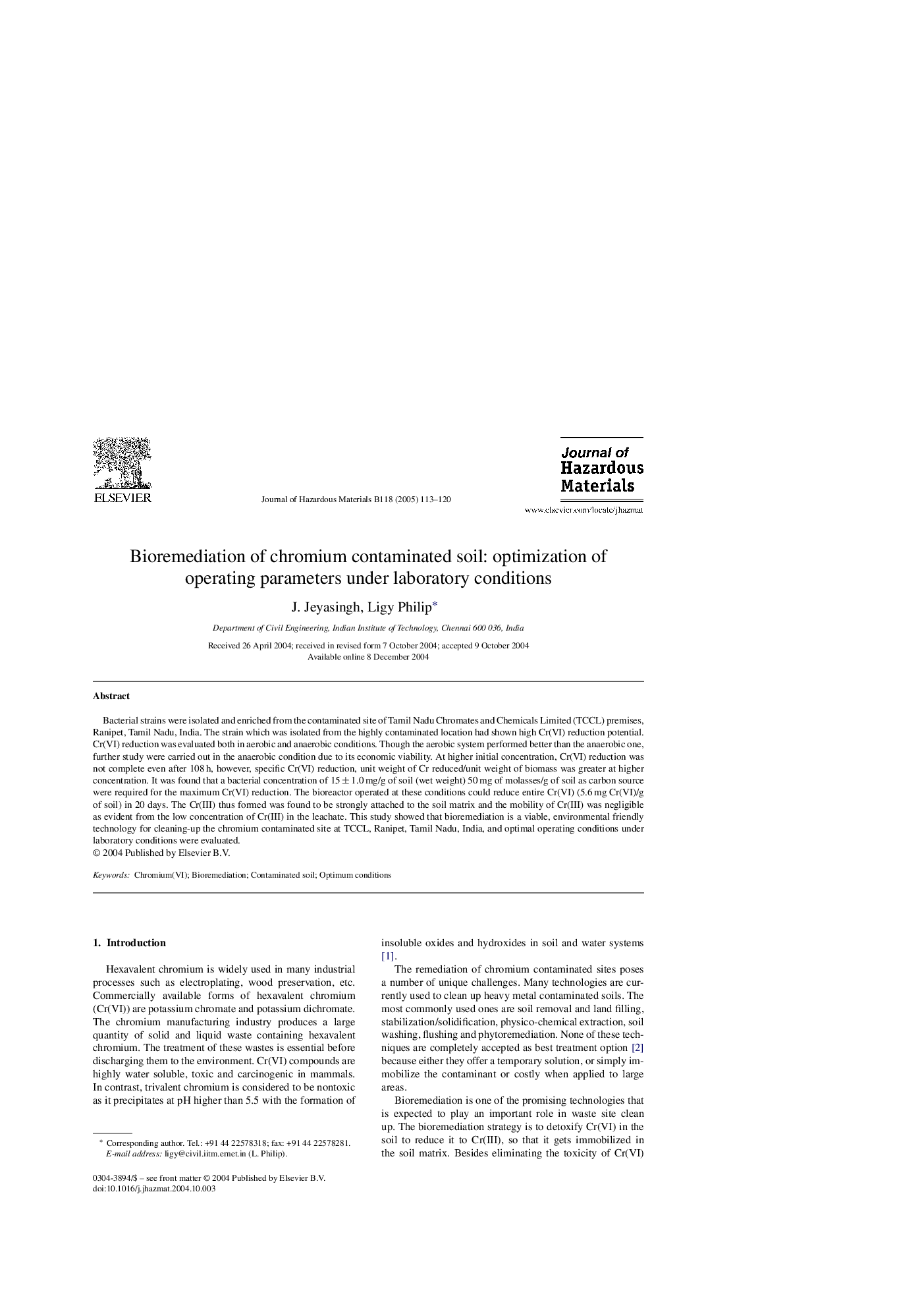| Article ID | Journal | Published Year | Pages | File Type |
|---|---|---|---|---|
| 9674390 | Journal of Hazardous Materials | 2005 | 8 Pages |
Abstract
Bacterial strains were isolated and enriched from the contaminated site of Tamil Nadu Chromates and Chemicals Limited (TCCL) premises, Ranipet, Tamil Nadu, India. The strain which was isolated from the highly contaminated location had shown high Cr(VI) reduction potential. Cr(VI) reduction was evaluated both in aerobic and anaerobic conditions. Though the aerobic system performed better than the anaerobic one, further study were carried out in the anaerobic condition due to its economic viability. At higher initial concentration, Cr(VI) reduction was not complete even after 108 h, however, specific Cr(VI) reduction, unit weight of Cr reduced/unit weight of biomass was greater at higher concentration. It was found that a bacterial concentration of 15 ± 1.0 mg/g of soil (wet weight) 50 mg of molasses/g of soil as carbon source were required for the maximum Cr(VI) reduction. The bioreactor operated at these conditions could reduce entire Cr(VI) (5.6 mg Cr(VI)/g of soil) in 20 days. The Cr(III) thus formed was found to be strongly attached to the soil matrix and the mobility of Cr(III) was negligible as evident from the low concentration of Cr(III) in the leachate. This study showed that bioremediation is a viable, environmental friendly technology for cleaning-up the chromium contaminated site at TCCL, Ranipet, Tamil Nadu, India, and optimal operating conditions under laboratory conditions were evaluated.
Related Topics
Physical Sciences and Engineering
Chemical Engineering
Chemical Health and Safety
Authors
J. Jeyasingh, Ligy Philip,
